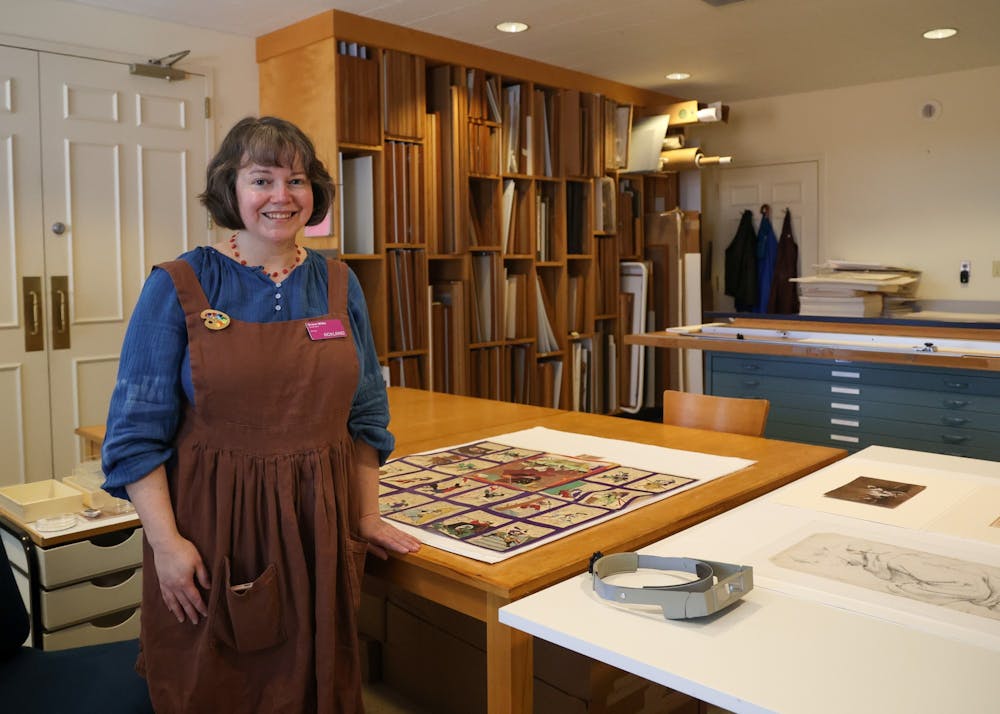Painters paint. Drawers draw. Artists create.
But who preserves art so it reaches future generations? At the Ackland Art Museum, Grace White is the woman behind it all – well, at least all things paper.
As a paper conservator, White works in a lab at the museum and uses chemicals and solvents to repair damage on drawings, paintings, watercolors and prints. She also works to keep the artwork safe and free from future damage.
White said she is currently treating a 19th-century Japanese board game that was created on thin paper and became damaged by tape and tears. She is using solvents to remove the tape and watercolors to fill in the lost pigment from the tears.
For White, one of the most interesting parts of her job is studying art materials from various time periods and parts of the world.
"I love being able to touch all of the artwork — something that is usually forbidden to most people in museums," she said. "But I really love that hands-on connection to the artwork and to the history."
White's job is not only important for the physical preservation of art. She said conservation is important because art fosters global competence and gives viewers more compassion and appreciation for the world.
“I think loving artwork opens our hearts to loving each other and to learning more about each other and about other societies, other cultures, other nationalities, other races," she said. "I think it can be a holistic learning experience. Art can be a puzzle piece that fits in with the whole."
Deputy Director for Curatorial Affairs Peter Nisbet said art at the Ackland and elsewhere has significance to history and the human experience.



